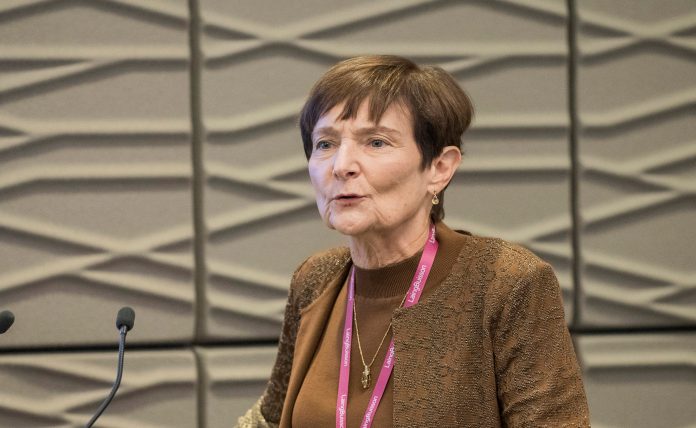Kelsey Rees reports from LaingBuisson’s Housing with Care Seminar, which discussed the market’s potential for growth and why it is not accelerating as quickly as it should be
The ageing population continues to be a key driver in the increased investor demand for housing with care and other residential alternative asset classes.
The number of older people has grown, with those aged 65 and over increasing 1.5% between 2000 and 2016 CAGR (compound annual growth rate) and those over 85 rising 2.2% over the same period, exceeding overall UK population growth, which was 0.7% in the same period.
This ageing population is seeing more people move from paying into their pensions to drawing those pensions down.
‘As a result, you’ve got pension fund insurers now switching their focus from those more growth focused assets to trying to find investments that produce a steady and stable income return,’ Lawrence Bowles, associate director at Savills, told LaingBuisson’s Housing with Care Seminar.
‘Those investors need to find a way to produce those higher income returns, and they do that by moving a little up that risk premium, and looking into those more alternative asset classes they may not have necessarily considered before, such as those alternative residential asset classes, such as housing with care,’ Bowles continued.
Market growth
Annual investment into all UK property over the past five years (2013-2018) has grown at around 2.7%, double the growth when looking into investment into alternative property classes.
However, although those alternative asset classes are growing more quickly, they are still a relatively small proportion of the market.
In 2018, alternative asset classes saw £10bn of investment, as opposed to more than £60bn of investment into property as a whole.
The UK operational residential market is valued at £223bn, this includes housing with care, retirement housing, build-to-rent and student accommodation.
‘Potential for growth in these sectors is pretty massive, and housing with care is not only accelerating quickly, but it’s not accelerating nearly as quickly as it should be,’ said Bowles.
‘If we do see those sectors evolve to full maturity, we expect to see the value of that operational residential real estate to grow to £880bn.’
Bowles went onto say the reason behind this lack of accelerated growth is down to the concentration of housing wealth that older homeowners have.
‘If you look at the homeowners aged over 65, in aggregate, they own £1.6trn worth of housing equity in their homes, the vast majority of that unmortgaged,’ he said. ‘Part of the challenge for this sector is explaining the benefits of housing with care.’
Bowles referenced a number of Ipsos MORI polls carried out from 2016 to 2018, asking over 65s across Europe about their concerns for the future, which found 45% of respondents said they do not have confidence in the future and 25% said they are trying to anticipate for their old age.
‘We’re talking about a market that says they are trying to anticipate for their accelerating social and medical care needs. And therefore, this should be a ripe opportunity for selling into that housing with care offering, whether that’s market sale, whether that’s private rent,’ Bowles concluded.
The value of housing with care built in 2018 stood at £930m, according to LaingBuisson’s Housing with Care – second edition.
There has been robust growth in the number of housing with care apartments, at 6.8% CAGR from 2009 to 2018.
This is a slight increase from 5.9% CAGR for 2000–2007, and far stronger than the growth of age exclusive housing (0.5%) and sheltered retirement (0.5%) from 2009–2018.
Consumer insight
Margaret Wylde, chief executive officer of market research firm ProMatura, presented the findings of a consumer insight study of the housing with care market with the Associated Retirement Community Operators (ARCO), on what consumers really want.
The study found that, in the UK, 40% of respondents said they felt at home, whereas in the US it was only 25%.
‘The reason for that is because in the US, we’re a rental market,’ said Wylde. ‘There is a sense of loss of control in moving to a rental product and that loss of ownership really detracts from us getting more people to move to this type of product.’
Wylde went onto outline that consumers wanted to feel a sense of belonging, and for their families to feel welcome at the property and for it to be a place family liked to visit.
The quality and variety of food on offer was also another crucial factor in making older people feel comfortable in their retirement communities.
‘People don’t want to be trapped paying for three meals a day, seven days a week, they don’t want to feel tied to eat every meal in the building,’ said Wylde. ‘That’s loss of control and that’s one of the most important attributes to all of us in our lives – having a sense of control. That’s why homes are better than apartments. Ownership is better than renting and having options on the meal programmes, being able to take what you want.’
Value of care
As the market matures, the need to deliver more care increases.
ARCO conducted research with its members that had retirement communities with domiciliary care onsite to get an idea on the state of the sector.
It spoke to its members that had at least one community open for at least a year. This equated to 18 operators, 350 communities, 23,000 units and 30,000 people, representing about 40% of the retirement community sector.
ARCO found that during the first year, 30% of residents were using some form of domiciliary care, with 100,000 hours of care delivered a week.
‘To put it into context of the 30,000 residents, if every single one of them is receiving domiciliary care that would breakdown to three and a half hours of domiciliary care per week per person,’ said Shandi Peterson, deputy director of ARCO.
Research also found the majority of ARCO’s members provide care in house, 13% have an external partner, and 86.7% own and operate some, if not all, of their care themselves.
‘In terms of workforce, some members choose to hire care staff who have no previous care background because they would rather teach someone from the ground up to have that customer focused mindset as opposed to potentially more paternalistic, patient-centred approach,’ said Peterson.
McCarthy & Stone is also transitioning its business to have more of a focus on care. Earlier this year, the retirement communities developer concluded its partnership with Somerset Care and now delivers its regulated care in house.
‘We’re centring our approach on what customers value and are looking to become a service lead business,’ said Jeanette Martin, care director at McCarthy & Stone. ‘We’re looking at more flexible services, integrated technology and more onsite partnerships.’








 ©2024 All rights reserved LaingBuisson
©2024 All rights reserved LaingBuisson 


